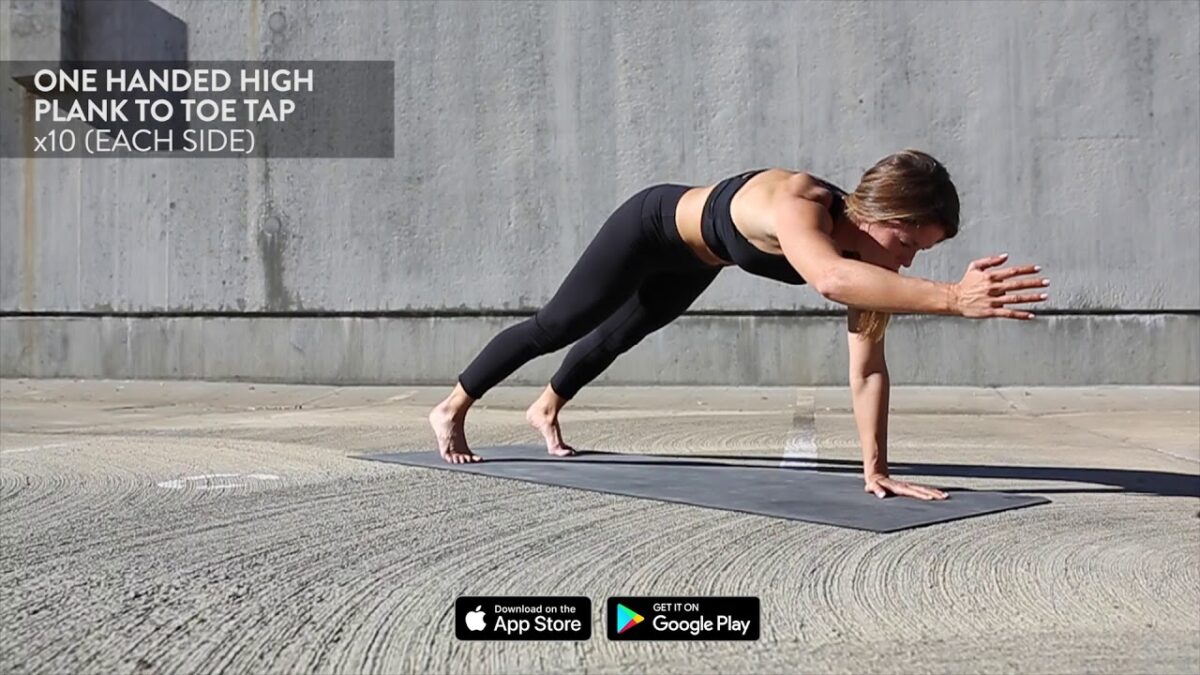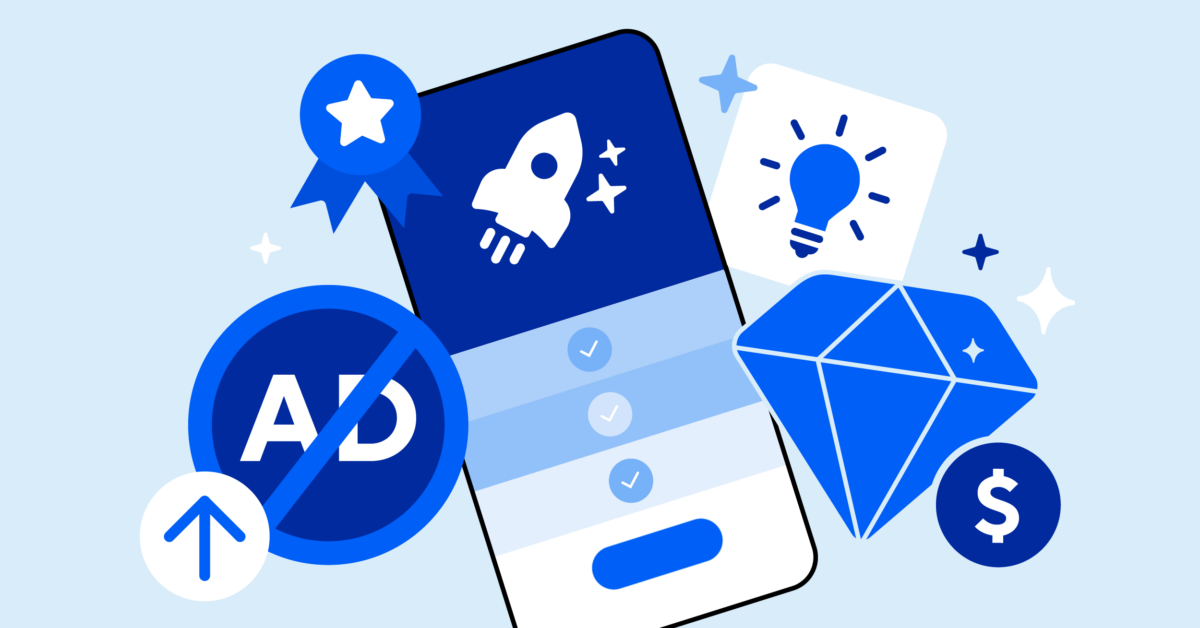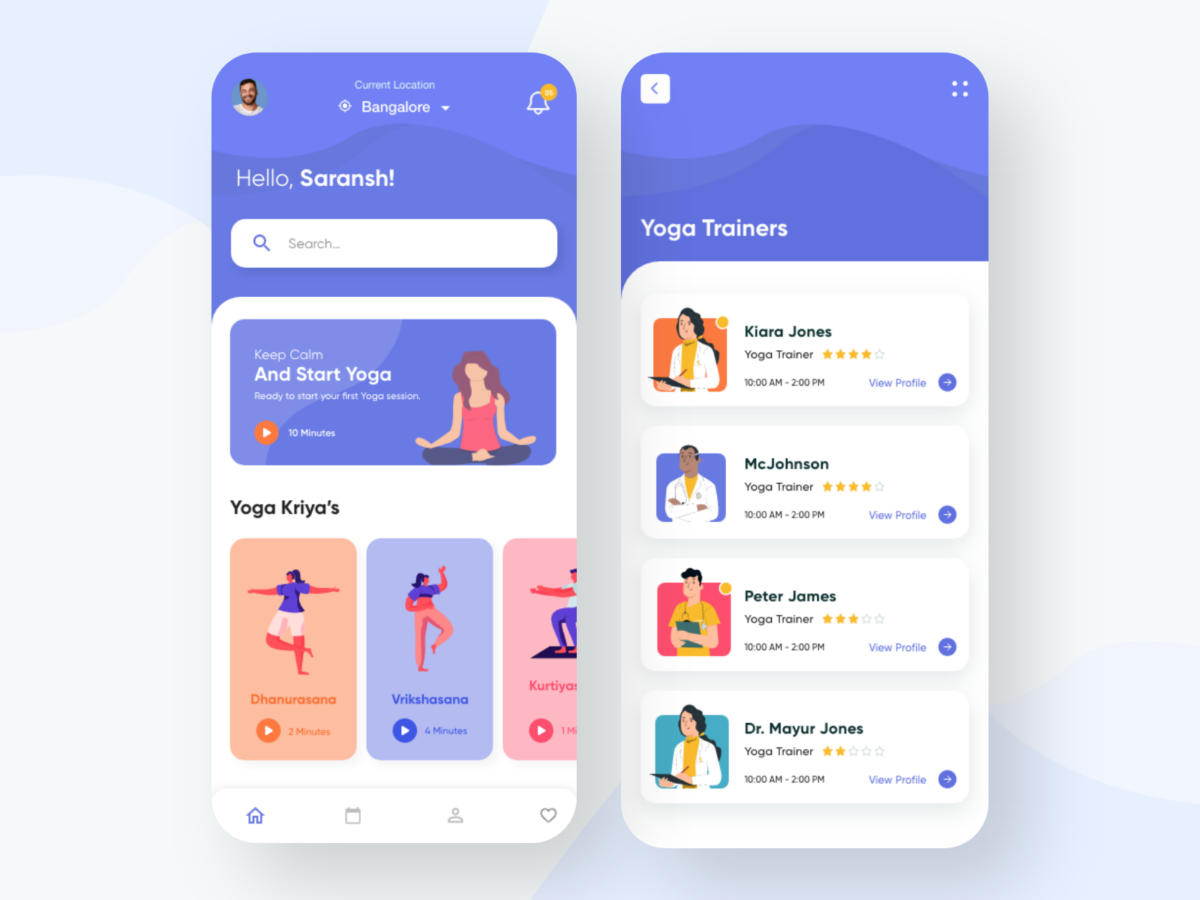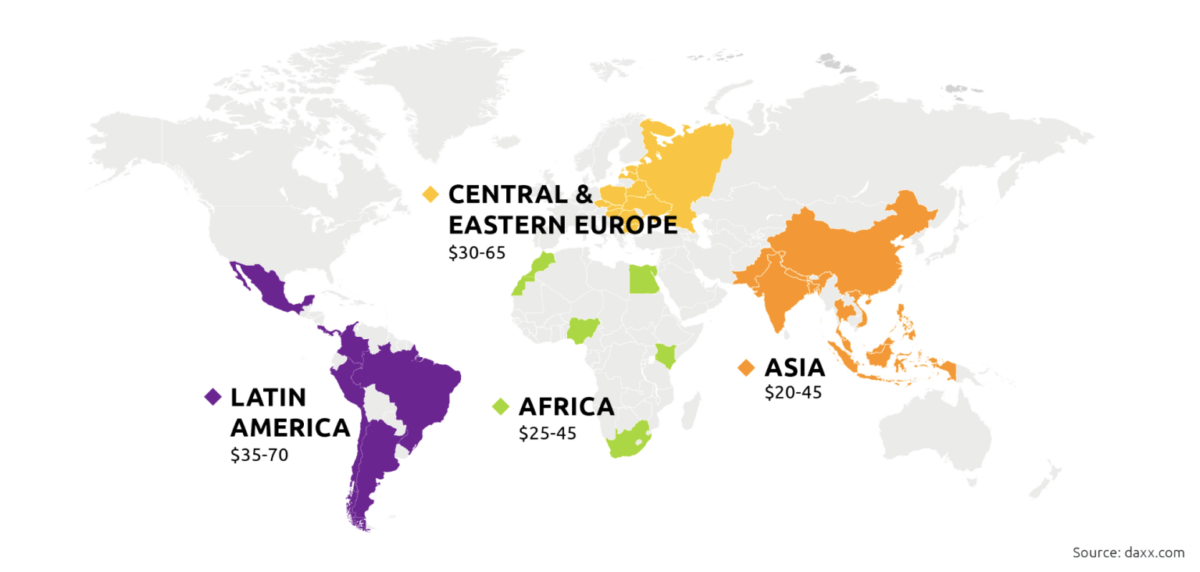Yoga App Development 2025 | How To Make An App Like Asana Rebel?
Yoga is one of the most popular exercises not only for physical health-being but it also benefits an individual’s mental health. During COVID-19, many yoga studios have closed, forcing yoga and meditation enthusiasts to practice at home with the help of online courses and yoga apps.
Therefore, right now is the prime time for developing a yoga app. If you are wondering how to make one, this article will teach you everything you need to know about Yoga App Development, specifically apps like Asana Rebel.
1. Yoga Market & Trends
 Due to the lockdown, people started to exercise more at home, making fitness apps their best friends, Yoga apps are no exception. These statistics might show you the potential of the industry:
Due to the lockdown, people started to exercise more at home, making fitness apps their best friends, Yoga apps are no exception. These statistics might show you the potential of the industry:
- A report from Wellnesscreatives, more than $88 billion is generated annually by the yoga industry. This number is projected to grow to $215 billion by 2025, which means the yoga industry will see an 11.7% of CAGR!
- According to Financesonline, over 350 million people do Yoga as of 2020.
- 67% of people do Yoga at home (Zippia).
- Keyword “Yoga Apps” searches grew 65% from 2019-2020 (Google).
- Statista stated that there were 30 million downloads among the Top 8 Most Popular Yoga Apps.
Knowing the Yoga Industry will continue to expand, there is a high chance the Yoga App Industry will too. So, let’s get started in detail on Yoga App Development!
2. Yoga App Development To Make An App Like Asana Rebel
1. What is Asana Rebel?

Asana Rebel is an app that offers more than a hundred unique yoga-based workouts, in addition to meditations and healthy meal plans. Users can also participate in exercise challenges, which are multi-day programs designed to get them to their fitness goals.
The app is the go-to app for health and fitness enthusiasts looking to trim down, bulk up, get a good night’s rest, and boost their stamina and general health. In addition, by providing information about their backgrounds, objectives, and current states of health, these fitness buffs can design unique programs just for them.
Every single one of the workout classes is based on different yoga poses, and there is even a beginner’s course that teaches the fundamentals of yoga, such as vinyasa or warrior foundations. Now, what is the first thing to look for when you do a Yoga App Development?
2. Development Approaches For A Yoga App
The first thing to consider is how will you develop this Yoga App, there are three major approaches to Yoga App Development, and each of them has its own pros and cons. The three types are:
- Native Yoga App Development
- Cross-Platform Yoga App Development
- Hybrid App Yoga App Development
2.1. Native App Development
This method is utilized when developing “native” applications for a specific operating system or device. Therefore, this is the best option if you need to build your Yoga app for a particular platform, such as Android or iOS. The user experience provided by native apps is more genuine and well-polished. However, the development of native apps requires significantly more work and time.
2.2. Cross-Platform App Development
You can use this approach to develop a single app that will run on various platforms. These applications have a unified codebase, enabling them to run on multiple operating systems. In addition, they provide flexibility by utilizing technologies that are not dependent on any particular platform. On the other hand, they might offer a more honed experience similar to native apps.
2.3. Hybrid App Development
In this method, we create programs that aren’t tied to a specific platform so that they can run on any system. These apps take advantage of both native and web-based technologies to speed up development while maintaining high performance. This means that your Yoga app will function nearly as well as native apps.
Looking For a Dedicated Team?
A Dedicated Team might be the best solution in your case. Get in touch with us and we’ll help you choose the best IT outsourcing model based on your business needs and requirements.
3. Monetization Types For Yoga App

This might be the most important element to concern when building a Yoga App, to gain profit. A variety of approaches exist for making money off of apps; here we’ll go over the four most prominent ones:
- In-app advertising
- One-time Fee/ Subscription
- In-app purchase
- Sponsorship/Affiliate Sales
3.1. In-app advertising
This model is probably the easiest and most common one. You give your app away for free and add ads to make money. In this case, you can do one of two things. You can make deals directly with the companies that will buy the ads, which will probably be fitness nutrition, or clothing companies, or you can use an ad network. The first option might be more profitable but harder to do, while the second might be less profitable but easier to do.
3.2. One-time Fee/ Subscription
You can sell subscriptions or one-time app purchases. The former is far more profitable, but it may be harder to get people to pay a monthly fee. To charge such a fee, your application must be unique and valuable.
3.3. In-app Purchase
You have the option of offering in-app purchases for meal plans, specific exercise sets, or even personalized instruction from a trainer.
3.4. Sponsorship/Affiliate Sales
You can also find a few sponsors who will pay you to give your users access to their content or send them to their online stores, websites, etc. You can also make money as an affiliate by promoting fitness-related products or services and getting a fee when people buy them because of what you said.
Having known how to gain profit from your users, now you need to know which features will make your Yoga App stands out.
4. Asana Rebel Yoga App’s Features You Should Implement
4.1. Registration and Login
Keep this section simple and straightforward; a complicated registration process may irritate users. In addition to the traditional method of creating an account (enter username and password), using the social login feature, also known as a Passwordless email or SMS sign-up, allows users to create an in-app profile using information from social media sites such as Facebook or Twitter. Signing in with a Google Account or an Apple ID is also a viable option.
4.2. Yoga Sessions
This is one of the most important yoga app features that your target audience expects to see. Fortunately, there are numerous ways to provide such content:
- It may include videos filmed by Yoga instructors.
- Implement visuals into your workout explanations (like in the Pocket Yoga app).
- It is also possible to create animations that demonstrate the correct technique as a kind of intermediate option.
- You could even hold live yoga classes!
4.3. Calendar & Events
The calendar allows users to track their Yoga Schedule and their registered Yoga Classes to attend regularly. The calendar can also display upcoming Events or Live Classes.
Events are essential to building a community because they increase user interaction with the apps. Making use of the Events Feature to keep users updated on future activities. As a result, more people will be aware of your initiatives and will participate, ensuring that your customer base remains active and enthusiastic.
4.4. Profiles

Everyone wants their profile to feel more personal, which can lead to more time spent in the app. A Profile can display your users’ Yoga Exercises and allow them to keep track of their Progress to keep up with the programs. Having a Profile to fill in their information also will enable you to offer customized workout plans for them, thereby enhancing their experiences.
4.5. Push Notifications
When interested in Yoga App Development, one feature you want to implement is Push Notification. There are numerous applications for them as you create a Yoga app, here are some of examples:
- Ensure your clients are actively engaged in your sessions by asking them to do so on a regular basis.
- Users should be reminded of upcoming events.
- Let the audience know when new collections of yoga exercises are available.
Push Notifications are an extremely effective retargeting tool, and we strongly advise you to include them on your yoga app’s MVP list.
3. Cost Of Yoga App Development
The last thing you might wonder about Yoga App Development is how much does it cost to make one?
The answer, unfortunately, is not so simple. The cost of developing a yoga app is directly proportional to the number and type of features including the size of the app, the design’s scalability, and the chosen mobile platform. But all in all, when it comes to Yoga App Development costs, the most important factors to consider are the location of the development partner, the platform of choice (iOS or Android), functionalities, features, UX & UI design, and so on. If you take them all into account, the MVP App would cost between $15,000 and $35,000.
Outsourcing is one way to save money. However, the cost is influenced by where the development partner is located. Every country has different labor costs, and where labor costs are high, the overall cost of Yoga app development rises.
 It is apparent that Asia is the cheapest location to outsource among all the 4 regions. Now, let’s see the outsourcing cost in some Asian countries:
It is apparent that Asia is the cheapest location to outsource among all the 4 regions. Now, let’s see the outsourcing cost in some Asian countries:
- India Outsourcing Cost: $19-$40/hour
- China Outsourcing Cost: $19-$38/hour
- Vietnam: $18-$22/hour
Conclusion
Above is all you need to know when developing a Yoga App. If you are looking for a high-quality Software Development Outsourcing company with a reasonable price, Savvycom can offer what you are looking for. We are a Hanoi-based company, with over 14 years of experience, and have worked with many partners in the Healthcare Industry, so building a Yoga App is our expertise.
Savvycom – Your Trusted Tech Partner
From Tech Consulting, End-to-End Product Development to IT Outsourcing Services! Since 2009, Savvycom has been harnessing the power of Digital Technologies that support business’ growth across the variety of industries. We can help you to build high-quality software development consulting services and products as well as deliver a wide range of related professional services.
Savvycom is right where you need. Contact us now for further consultation:
- Phone: +84 24 3202 9222
- Hotline: +84 352 287 866 (VN)
- Email: [email protected]
How long does it take to build a Yoga App?
Most of the time, you can expect to wait anywhere from 4-8 months. However, the exact figure will be determined by a variety of factors, including but not limited to your specific requirements, the available budget, the scope of the app, the type of hiring model you opt for, and so on.
What are the steps to create a Yoga App
To build a Yoga App from A to Z, you might need to go through these steps:
- Step 1: Market and competitor research
- Step 2: Choosing an app development model
- Step 3: Planning time and budget, and hiring specialists
- Step 4: MVP development
- Step 5: App development
- Step 6: Testing and deployment
How can I develop a Yoga App?
Today, it is relatively easy for businesses to build an app for their own. There are three options you can choose to develop your Yoga App:
- Create your own in-house developer team.
- Outsourcing a developer team.
- Hire freelancers to develop your app.


